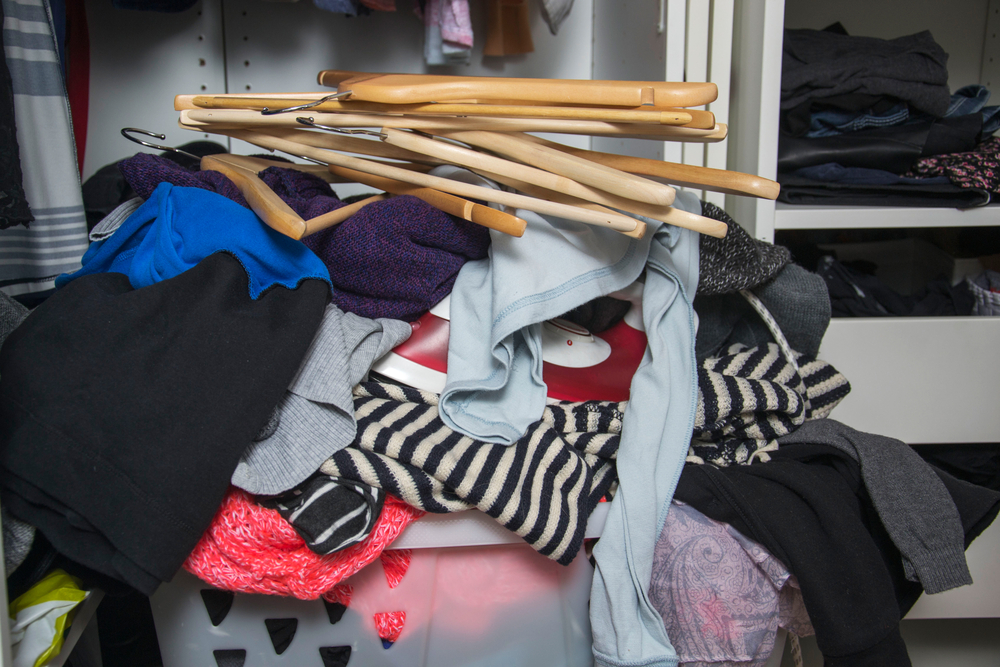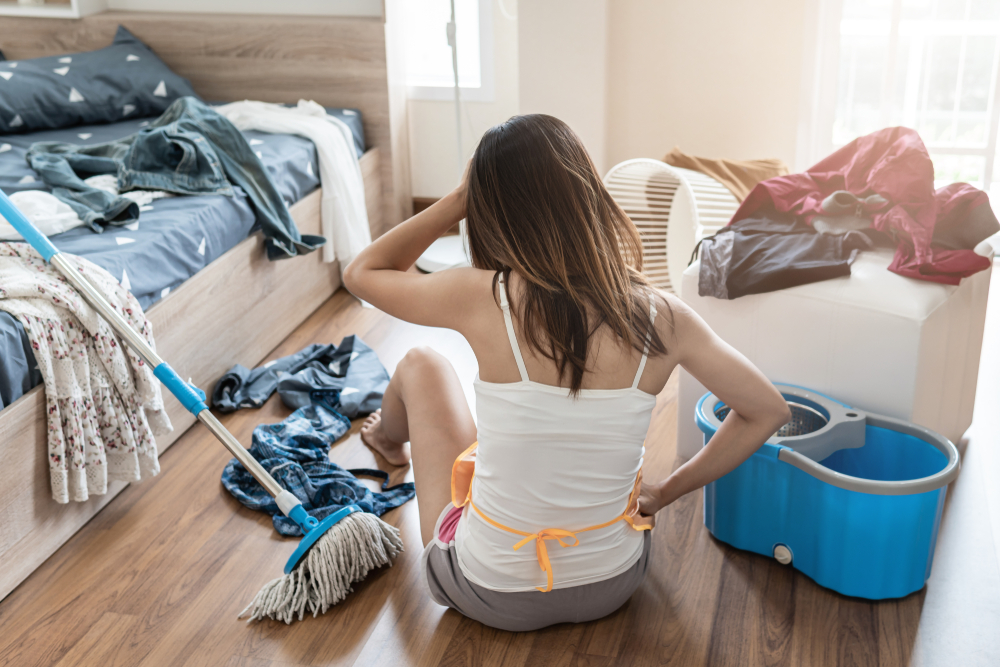5 Terrible Things You Learn When Living With A Hoarder Mum
Singapore as a society, can be quite unsympathetic to hoarders. “Why can’t they just throw their stuff away?” we ask. But it’s not that simple. We spoke to a young Singaporean, who spent her childhood and teenage years living with a hoarder:
What does “hoarder” actually mean?
There’s a difference between someone who just doesn’t want to throw out their old concert t-shirts, and someone who hoards so much it affects their health. The latter is a case of compulsive hoarding disorder.
Hoarding disorder was first defined in the 5th edition of the Diagnostic and Statistical Manual of Mental Disorders (DSM) in 2013. But the Institute of Mental Health (IMH) conducted studies as far back as 2010, when it was discovered that one in 50 Singaporeans will exhibit this behaviour in their lifetime. This comes to about two per cent of Singapore’s adult population.
Characteristics of the disorder are:
- Difficulty in discarding or parting with possessions, regardless of their actual value
- A sense of distress when discarding items, due to the perceived need to save the items
- Accumulating items until they congest and clutter living areas
- Signs of social and occupational impairment, lack of self-care, and increasing inability to cope with daily living which inevitably affects self and others

Hoarding disorder can cause occupational and social impairment. Image source via 99.co
While hoarding may be related to other mental illnesses, such as schizophrenia, this isn’t always the case. Even if there’s underlying mental illness, IMH notes that “Sometimes, the management of the underlying mental illness also may not help the hoarding behaviour“.
We spoke to Anne (not her real name), who is currently a third year University student. She spent her childhood and teenage years living with a mother who’s a compulsive hoarder. Anne told us that:
1. You’ll discover no one wants to help, because no one wants to handle the confrontation
Who wants to be the first to confront a hoarder? What if it’s your friend or relative? The result is never pleasantness, as trying to clear away their stuff can result in physical and emotional violence.
Therein lies the problem – the people immediately surrounding a hoarder tend to sidestep the issue, because no one wants be the centre of a scene. When the screaming and crying starts, all the neighbours will be watching.
“Because it’s awkward to bring it up, no one wants to help intervene,” Anne says, “When we had visitors on the new year many had to stand, or even hang around in the corridor; but they would still be polite and pretend nothing’s wrong. But these are family, you would expect them to do something.”
And when Anne broached the subject of clearing out the house, her father would get angry and sometimes refuse to come home for days*; he didn’t want a showdown with his wife either.
“It’s a frustrating situation… everyone acknowledges something is wrong, but no one wants to risk being the centre of the scene. I learned early on that you have to be the one to handle it, when it’s your own immediate family. Don’t expect help,” Anne says.
This often left Anne to face down her mother alone, during periodic attempts to clear out the house. And just being in Secondary school at the time, it was especially tough for her to be called a “useless daughter”, to be accused of hurting her mother, etc. It also felt shameful because she knew the neighbours were listening, even if they didn’t outright comment.
*Anne also points out that her father had suffered a heart attack before, so it was not good for him to get into such confrontations

Who volunteers to be the centre of abuse, when trying to throw a hoarder’s stuff out? | Image source via 99.co
2. It makes you act weird among your friends
Anne didn’t want to bring friends to her house; you wouldn’t either, if your home was so cluttered some of them would have to remain standing. The state of her house was a source of constant anxiety.
“Whenever I took the bus back, I would purposely get off one stop early, because I had some friends who took the same bus as me. For years my friends thought I lived in a block that was actually quite far from my house. At least I lost weight from all the walking though!”
Anne also felt a constant, illogical sense of being judged all the time:
“It’s always at the back of my mind. Even a few passing words, or the way someone looks at me, can set off my anxiety sometimes. I would suspect that they all know, or that everyone knows and talks about it behind my back. It affected my willingness to meet people and make friends when I was younger.”
Anne says she’s naturally an extrovert, so this resulted in odd behaviour: she alternated between being friendly and engaging, and suddenly withdrawing because a comment or look set off her anxiety. Anne eventually revealed the truth to two of her closest friends, however, and they’re accepting of it (although no one gets invited to her house, even today).
While she’s since learned to cope, Anne believes her social development was slowed because of this as a teenager.
“I was the quiet and weird kid, for the whole of Secondary school.”
3. You don’t even know what’s yours, after a while
When there’s so much stuff in the house, it’s hard to keep track of things. Anne’s mother hoarded everything from old magazines to table lamps and cosmetic kits.
“After a while you don’t know what belongs to who. There are times when I try to throw out my own things, and mum will get angry because she thinks it’s hers. Then there are times when I ask why we can’t throw something away, and she’ll shout and say those are things that I brought in,” Anne says.
Anne was also often blamed for the hoarding. On the rare occasion anyone dared to ask about the junk, Anne’s mum would sometimes accuse Anne of being the hoarder: “She would say all the things are mine, and that I can’t stop buying things and waste money; that’s why the house is so crammed.”
After a while, the confusion spread:
“It affected my own head. There as one time I was insisting that a bag of shoes wasn’t mine and we should throw it out; and then later I realised that, oh my God, mum was right – it WAS my shoes in the bag. She had 30 or 40 plastic bags full of them, but that one bag was actually mine. I just get so messed up.”

You may not be able to differentiate what’s yours and what’s not, after a few years. | Image source via 99.c0
Anne says there’s just general confusion over who owns certain clothes, or who owns certain items like watches and bags. This sometimes results in her mum refusing to let her bring out certain items:
“She’s afraid I am wearing them to secretly go out and throw them, which I admit is something I tried once. But she also reacts that way to things I bought for myself. Imagine not being allowed to bring out a bag or an outfit you bought for yourself.”
4. You start to wonder if it’s infectious
Whenever Anne wants to keep something – like a birthday card, or a favourite but somewhat tattered “sleeping” t-shirt, she’s struck by the fear of also becoming a hoarder.
“I find myself wondering if I’m developing the same habits,” Anne says, “After all I grew up like this. Is there a chance I’ll end up being the same?”
Fear of developing the same condition has caused Anne to throw out many things that she treasures; one of them was a composition writing trophy she won in a Primary school (it wasn’t an earth shaking award, but it was the first thing that got her interested in being a writer one day). But her fear of also becoming a hoarder trumps the sentimentality.
“Anyway the house is already so packed,” Anne says, “There’s not much room for me to keep things anyway. Hoarding is a selfish addiction.”
5. Forget hanging out; cleaning takes up most of your day
“Although it looks messy, our house is not dirty. You can eat off the floor,” Anne says, “but you just imagine how we keep it clean, when there’s stuff everywhere.”
Imagine mopping or sweeping when the house is so packed, you have to walk in single file to move from the living room to the kitchen. Anne says the magazines are piled to just about shoulder height, while mounds of old shampoo bottles, cosmetic cases, old jeans and trousers, etc. are scattered in piles up to waist height.
Cleaning means having to lift these, check for bugs, mop and vacuum under them, etc. It’s like trying to single-highhandedly clean a whole factory outlet. The entire process, Anne says, could go from about eight in the evening, to almost midnight; and this was done almost every other day. Sometimes, whole weekends were taken up just cleaning.
“It was always a three person job,” Anne said, “Two people lift things, one person cleans. It’s ridiculous and exhausting. And the worst part is that even after all the cleaning, the house is still a mess.”
Anne says when she was younger, the neighbours – who were understanding of her mother’s condition – used to help.
“I think it was also a bit of self-interest; they also wanted to make sure we wouldn’t have cockroaches and ants and all that going to their house,” Anne says, “But it was nice of them, and they never made fun of us. But the new neighbours just avoid us.”

You have to clean and tidy your house constantly because of the mess. | Image source via 99.co
Still, there is hope
Thanks to the intervention of social workers at first, and then later a close friend’s mother, Anne’s mum is getting the help she needs. Her mother has conceded to monthly “clearings”, in which unused items are thrown out.
“She’s always in a very bad mood after that, and it gets very intense as she can’t bear to throw things away. There’s a lot of crying and asking why we do this to her,” Anne says, “But the house is a lot less cluttered, and she seems to get over it quicker.”
Currently, Anne is not living at home; but she is still residing near her mum, so she can drop in to help with cleaning and clearing. “I’ll still have to keep coming back and checking, it will never end” Anne says, “But that’s a part of life for me now; it becoming a routine makes it more tolerable.”
This article was first published on 99.co and republished on theAsianparent with permission.
ALSO READ:
What Mums Need to Keep in Mind To Get Past These Turbulent Times
Free and Affordable Mental Healthcare in Singapore
The post 5 Terrible Things You Learn When Living With A Hoarder Mum appeared first on theAsianparent - Your Guide to Pregnancy, Baby & Raising Kids.
✍ Credit given to the original owner of this post : ☕ theAsianparent.com
🌐 Hit This Link To Find Out More On Their Articles...🏄🏻♀️ Enjoy Surfing!




















Post a Comment